|
MAMLUK EGYPT
1341-1517 |
|

Flag of the
Mamluk Sultanate |
|
After the
Muslim conquest Egypt formed part of various caliphates and
sultanates. These polities had no national flags in the modern sense
but green, black, red, yellow and white banners were used, these
being colors associated with Islam or the ruling dynasties. With the
overthrow of the Ayyubid Sultanate Egypt fell under the rule of the
Mamluks, a warrior caste from the Crimea and the Caucasus in the
service of the Ayyubids. Though technically they were slaves the
Mamluks enjoyed a higher social status than freeborn Egyptians and
as time went on the Ayyubid sultans grew more and more reliant on
them. Eventually these warrior-slaves revolted and by 1341 a Mamluk
Sultanate, centered on Egypt, had consolidated itself. Besides Egypt
proper it included Palestine, Syria and the western coast of the
Arabian Peninsula. The banner most commonly associated with Mamluk
Egypt was tailed, colored yellow with a white crescent, and may be
regarded as the first flag of Egypt. |
|
OTTOMAN EGYPT
1517-1914
|
|
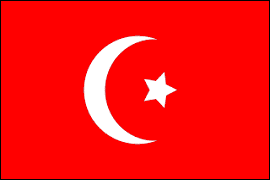
Ottoman Empire
• National Flag |
|

Ottoman Empire •
Merchant Ensign |
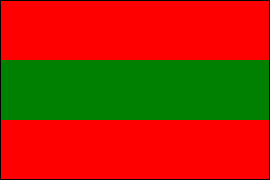
Ottoman Empire
• Variant Merchant Ensign |
|
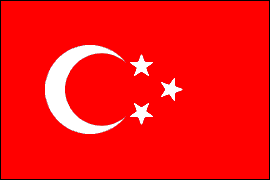
Khedivate of Egypt • 1867-1914 |
|
The flags of
the Ottoman Empire were usually red, often with a white crescent and
star, and many variants are known to have been used in the
seventeenth and eighteenth centuries. By the beginning of the
nineteenth century the flags shown above were in use. The merchant
ensign was plain red but masters of merchant vessels who had made
the pilgrimage to Mecca were permitted to fly a special ensign
horizontally striped red-green-red. Because the Mamluks, though
defeated, had not been displaced the Ottomans always had
difficulty asserting their authority over Egypt and the province
enjoyed a great deal of autonomy. They were finally suppressed by
Muhammad Ali, an Ottoman general of Albanian origin
who made himself the governor of Egypt in 1805. Like the Mamluks he
proved difficult to control, soon proclaiming himself
Khedive
of Egypt, i.e. the ruler of an
autonomous vassal state.
Though they recognized the nominal sovereignty of the
Sultan, Muhammad Ali and his successors behaved like independent
monarchs. Not until 1867
did the Ottoman Sultan give in and recognize this situation and
until then the Ottoman flag was the flag of Egypt. As a recognized
khedivate, however, Egypt was entitled to its own flag,
which was based on both the Ottoman flag and the personal banner of
Muhammad Ali (later the flag of the 1914-22
Sultanate; see below). |
|
THE BRITISH PROTECTORATE
1882-1922
|
|
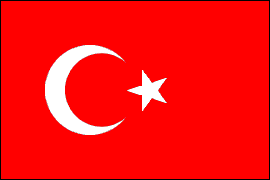
Ottoman Empire
• National Flag |
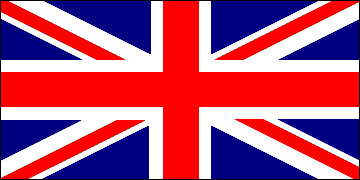
The Union Jack |
|

Sultanate of Egypt • 1914-22 |
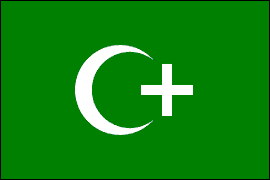
Flag of the 1919 Revolution |
|
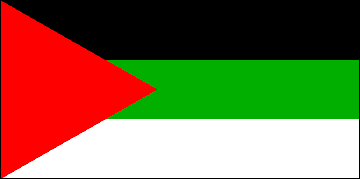
Pan-Arab Flag |
|
Between 1882 and 1914
the Khedivate of Egypt was
nominally under the suzerainty of the Ottoman Empire though in fact
Britain exercised an informal protectorate over the country. With
the outbreak of the Great War in 1914, which ranged the British and
the Ottomans on opposite sides, the protectorate was formalized.
Until then the flag of the Ottoman Empire, identical to the
contemporary Turkish flag, was Egypt's national flag. After 1914 the
personal standard of
Muhammad Ali was adopted as the flag of what was now
titled the Sultanate of Egypt. This flag was always flown in conjunction with
the Union Jack, which took precedence. The protectorate was unpopular with Egyptians
and there was much unrest, culminating in a revolutionary outbreak
in 1919. The flag of the nationalist revolution was green, a color
traditionally associated with Islam, bearing a
white crescent for the country's Muslim majority and a cross for the
Coptic Christian minority. Unlike most other Arab countries, the
four-color Pan-Arab Flag played no role in the development of a
national flag, though later on the colors red, white, black and green
did figure in the design of the Arab Liberation Flag and of the
United Arab Republic flag used between 1958 and 1972. |
|
KINGDOM OF EGYPT 1922-53
|
|
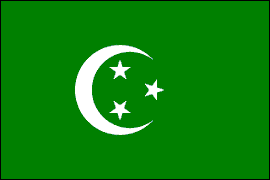
National Flag |
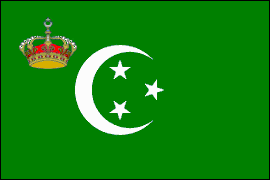
Royal Flag |
|
The 1919 revolution convinced the British government that the
protectorate over Egypt must be brought to an end and this was duly
done via a unilateral British declaration of Egyptian independence in 1922.
The Sultanate was transformed into a kingdom and the Sultan into a
king. Yet British influence remained paramount, with extensive
control over defense and foreign policy. Britain's grip was
somewhat relaxed by the terms of the Anglo-Egyptian Treaty of 1936
but even so the British retained a major say in Egyptian affairs,
including the right to station troops in the country for the defense
of the Suez Canal.
The national
flag of the Kingdom of Egypt was green with a white crescent and
three white stars. It thus combined design elements of the national
flag of the Khedivate, the Sultanate and the flag of the 1919 nationalist revolution. With a
royal crown added in the upper hoist it served as the King's
personal flag. |
|
REPUBLIC OF
EGYPT 1953-58
|
|
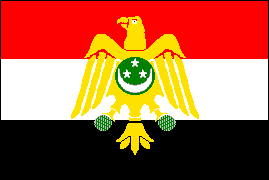
Arab Liberation Flag |
|
In 1952 a dissident
group within the Egyptian Army calling itself the Free Officers launched a
coup, deposing King Farouk in favor of his infant son Fuad. The
following year the Free Officers abolished the monarchy and
proclaimed Egypt a republic, but this did not immediately lead to the
adoption of a new national flag. However, the so-called Arab
Liberation Flag, a horizontal red-white-black tricolor charged with
the golden Eagle of Saladin was often flown in conjunction with the
green crescent and stars flag. Red stood for courage and the blood
shed for independence, white for purity and virtue, and black for the
oppressive past. Sometimes the breast of the eagle bore the arms of
the state as shown above. The eagle is said to have been the
personal symbol of the great Arab hero Saladin and though this is
disputed it is a popular symbol of Arab nationalism.
When Egypt joined with Syria to form the
United Arab Republic this flag fell into disuse. But the basic
design and colors were adopted for the flags of many Arab nations
and in Egypt itself the Arab Liberation Flag was to make a comeback
in 1984. |
|
UNITED ARAB REPUBLIC 1958-72
|
|

National Flag |
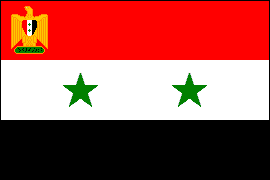
Presidential Flag |
|
In 1958 Egypt
and Syria signed a treaty of union. Thus was created the United Arab
Republic (UAR), a polity that it was hoped would eventually
encompass all Arab states. The flag of the new nation was a
horizontal red-white-black tricolor with two green stars for Egypt
and Syria on the white stripe. It thus merged the tradition of the
Arab Liberation Flag with that of the Pan-Arab Flag. The coat of
arms of the UAR was the Eagle of Saladin with a shield striped
red-white-black bearing two green stars. These arms appeared in the
upper hoist of the presidential flag. The union proved unworkable
and Syria withdrew from it in 1961 but Egypt continued to style
itself as the United Arab Republic and to use the flags of the UAR. |
|
ARAB REPUBLIC OF
EGYPT |
|
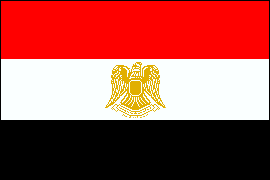
National Flag •
1972-84
|
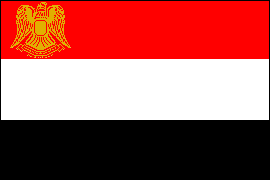
Presidential Flag •
1972-84 |
|
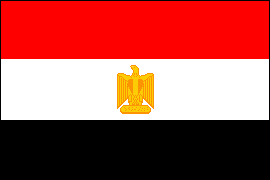
National Flag
Since 1984 |
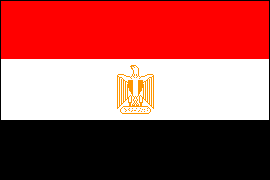
National Flag •
Variant Design |
|
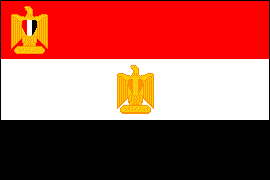
Presidential
Flag Since 1984 |
|
In
1971 on the initiative of Libya a Federation of Arab Republics (FAR)
was created. Besides Libya it included Egypt and Syria, and all
three countries adopted a new, identical national flag: the
red-white-black tricolor with the coat of arms of the FAR, a golden
yellow Hawk of Quraish, on the white stripe. A presidential flag was
also adopted with the arms moved to the upper hoist. This symbol is
associated with both the Prophet Mohammed and his tribe and the Arab
people as a whole. (The Arabs have long been noted for their falconry
skills, and falcons and hawks are favorite pets.)
In
conformity with the title of the Federation, Egypt renamed itself
the Arab Republic of Egypt. Though the merger was approved by
referendum in all three countries disagreements as to its terms soon
brought the FAR project to grief and the federation was dissolved in
1977. Seven years later Egypt discarded the FAR flag in favor of a
similar one with the new state coat of arms: a golden yellow Eagle
of Saladin, marking a return to the tradition of the Arab Liberation
Flag. This, the current flag of Egypt, is sometimes seen with the
arms in outline only as depicted above. The presidential flag has
the arms repeated in the upper hoist, with the shield striped
red-white black. |



















